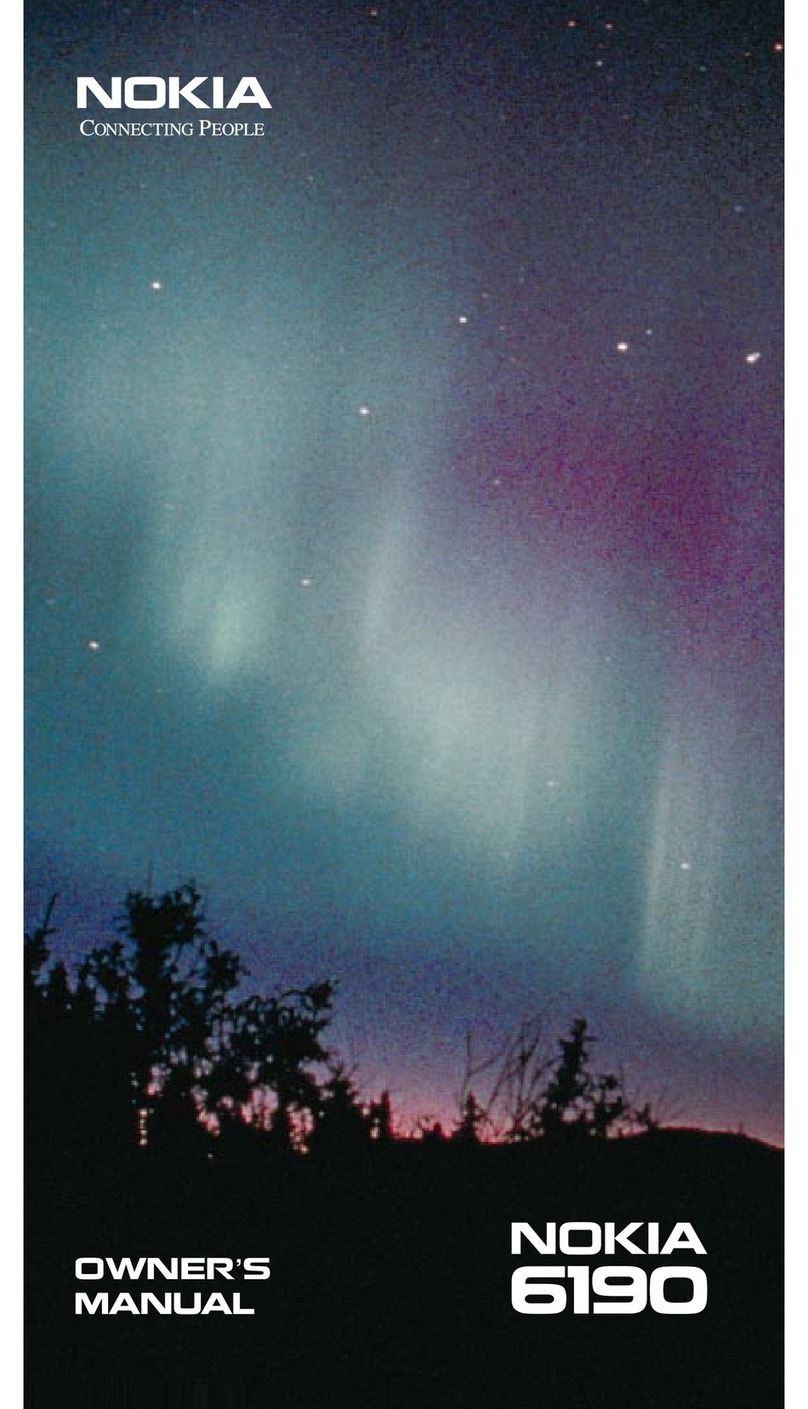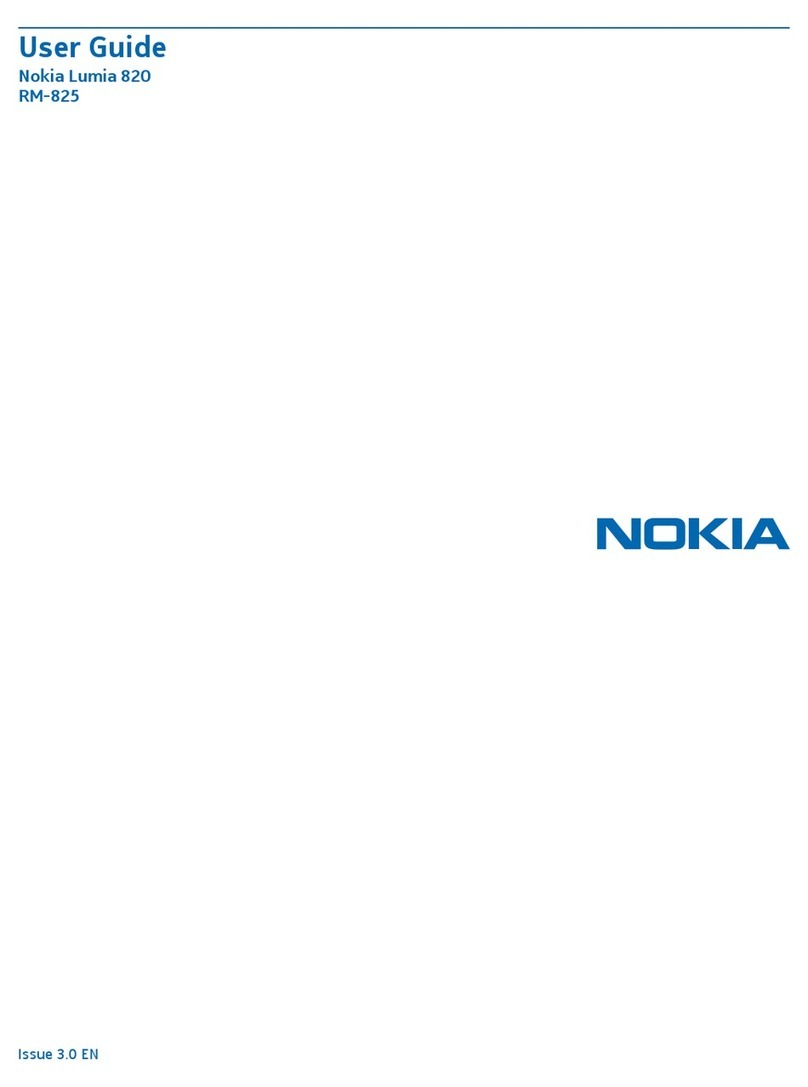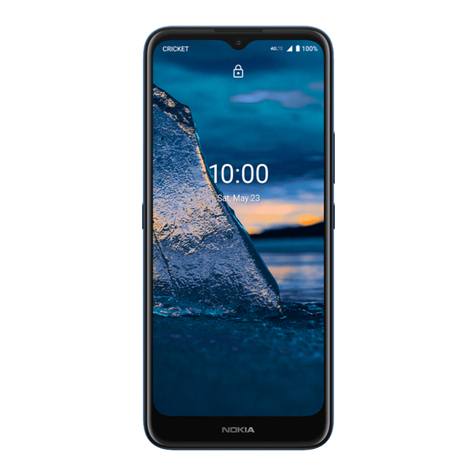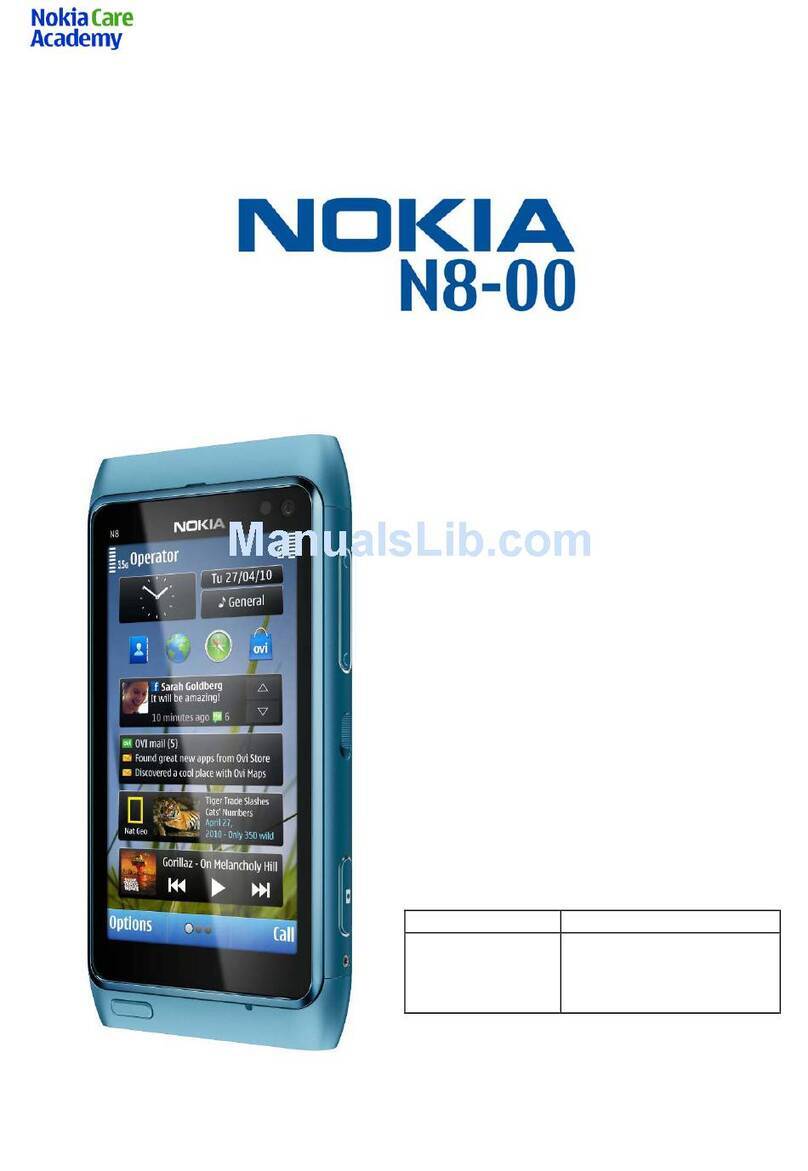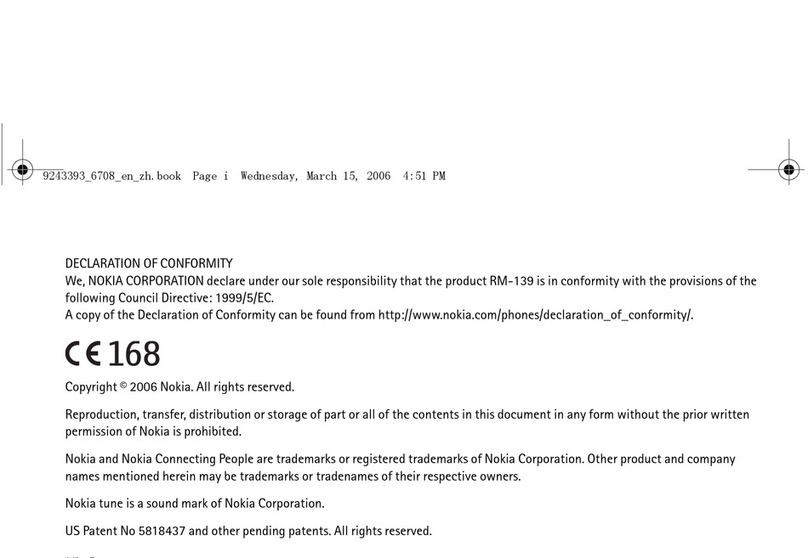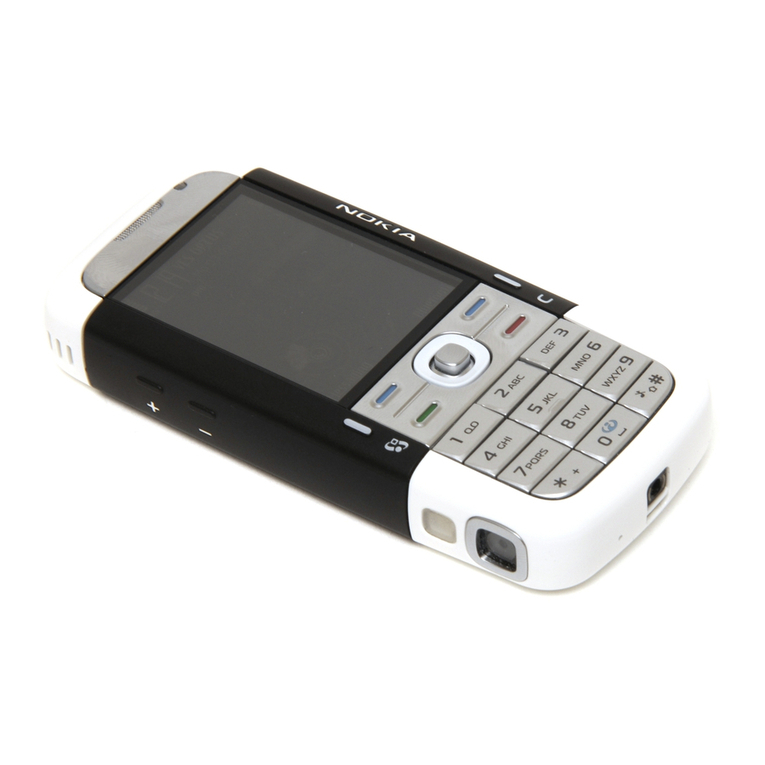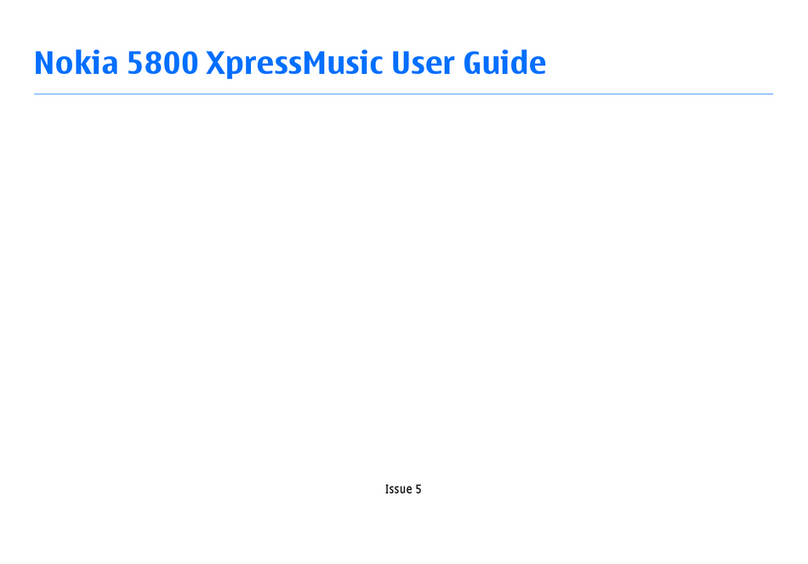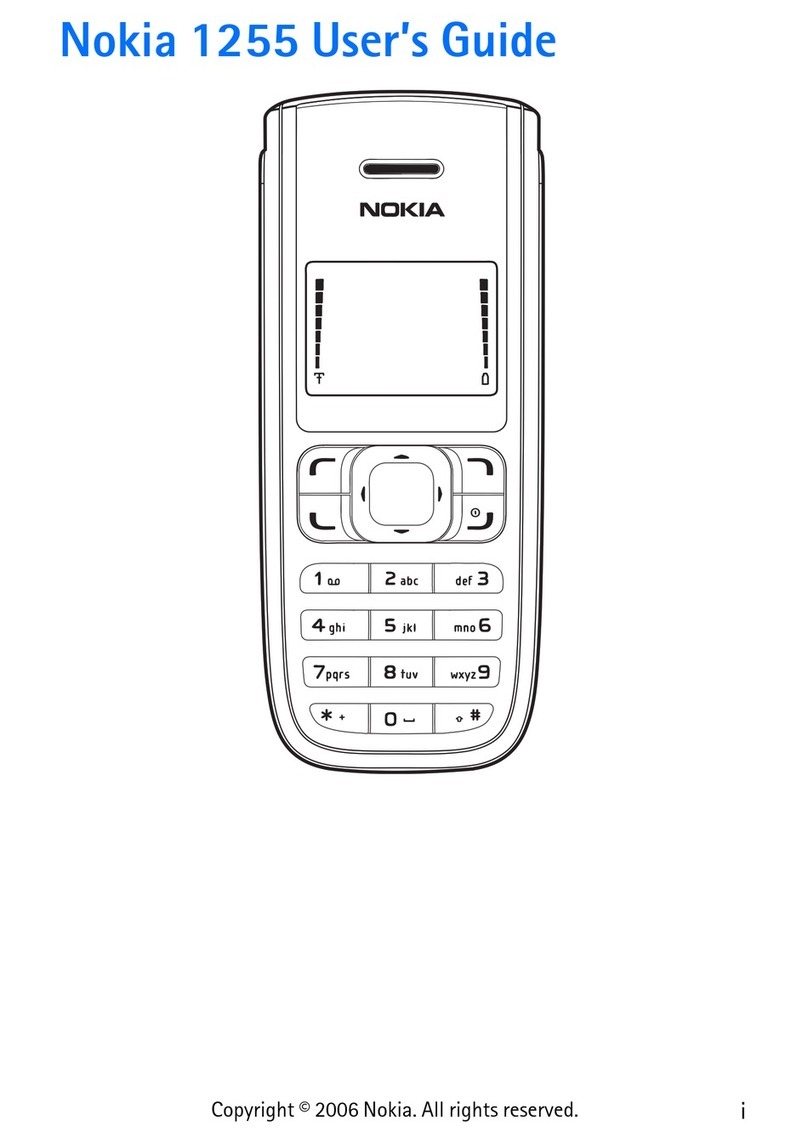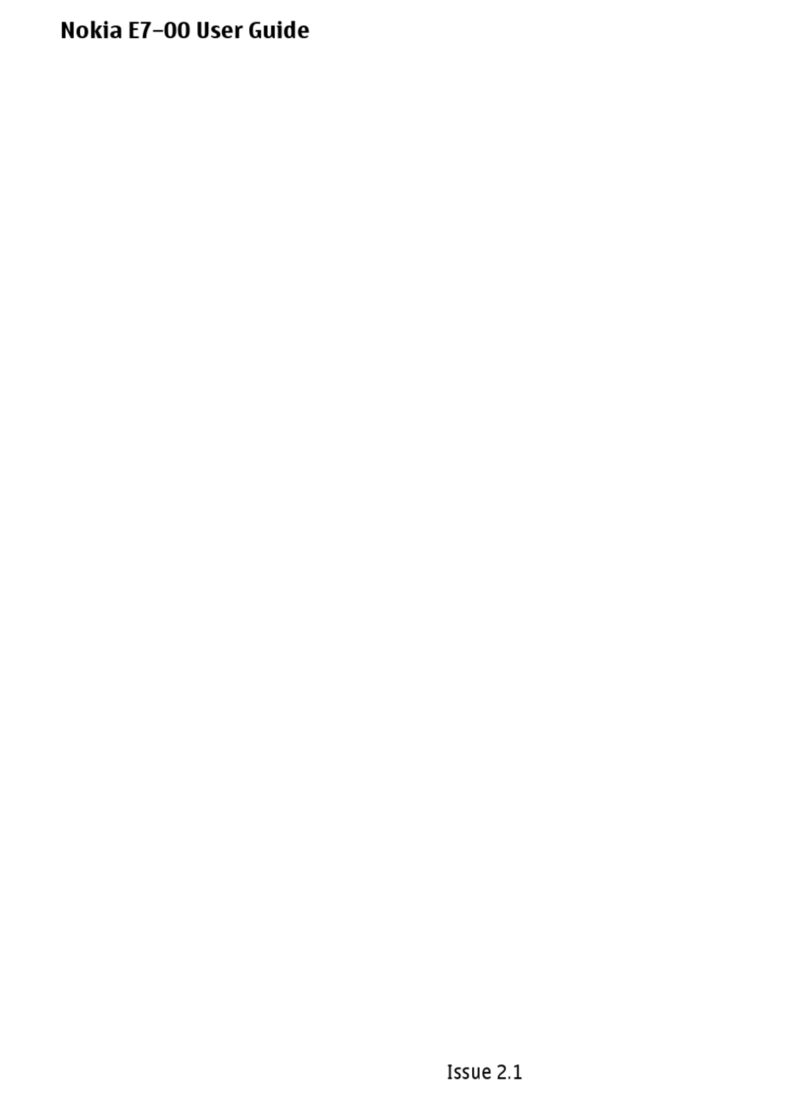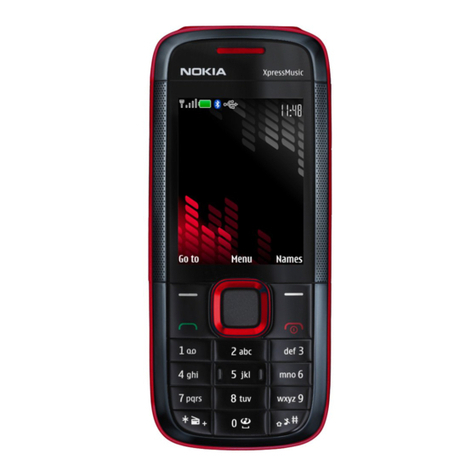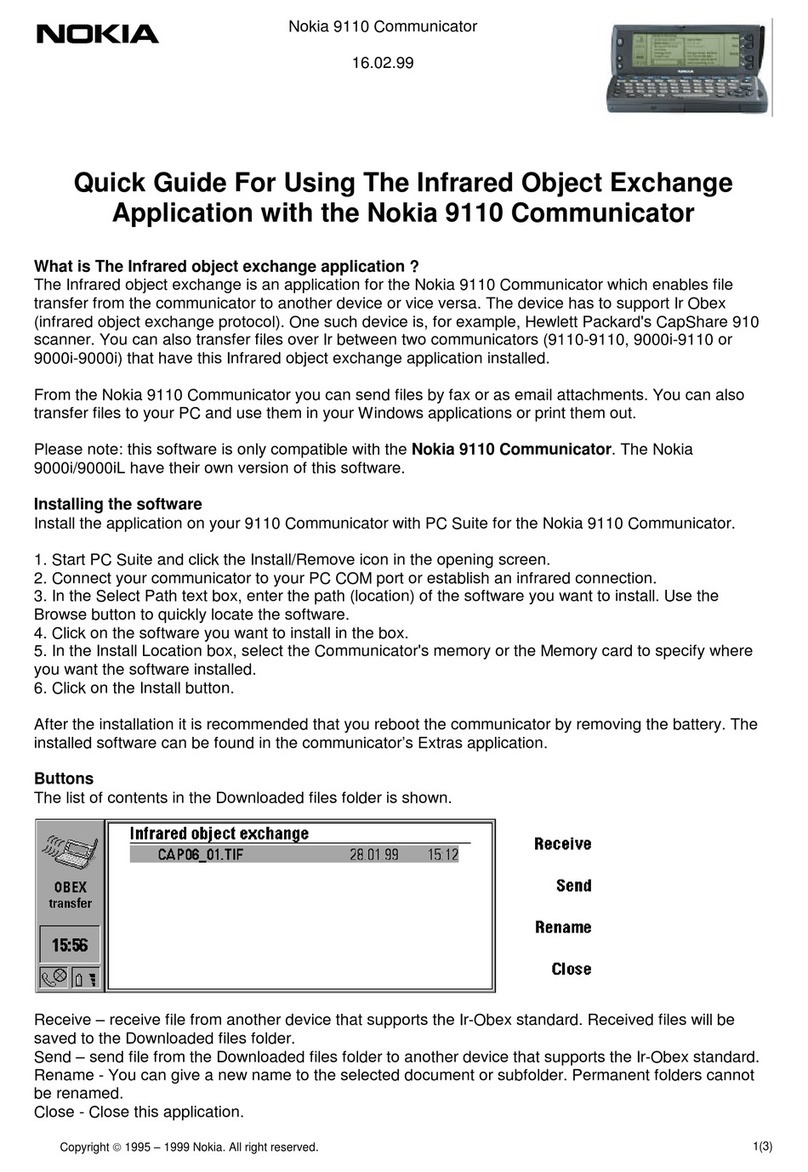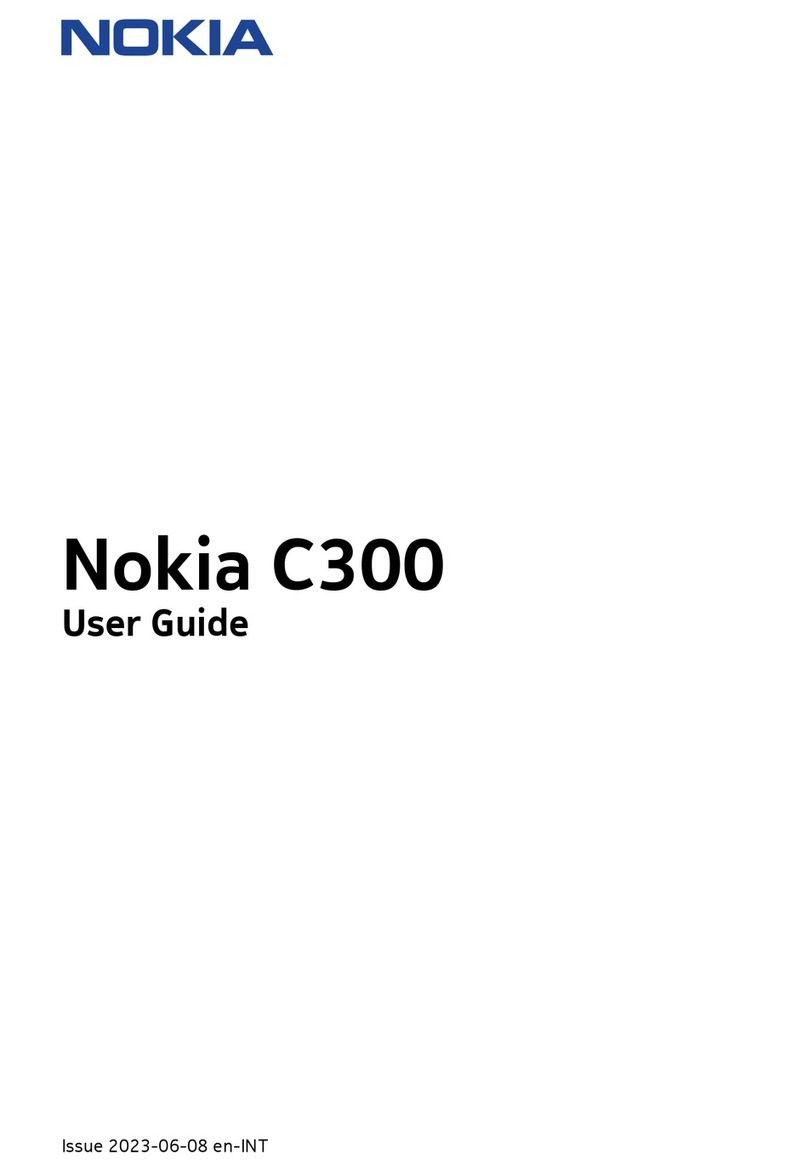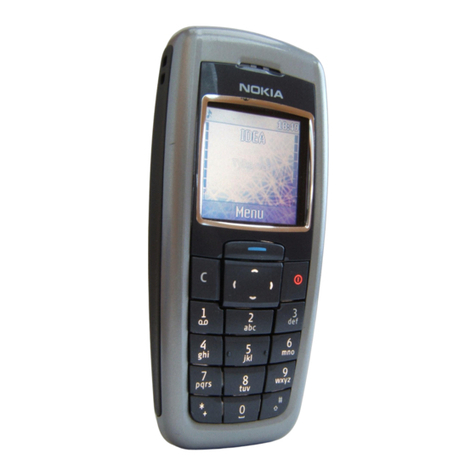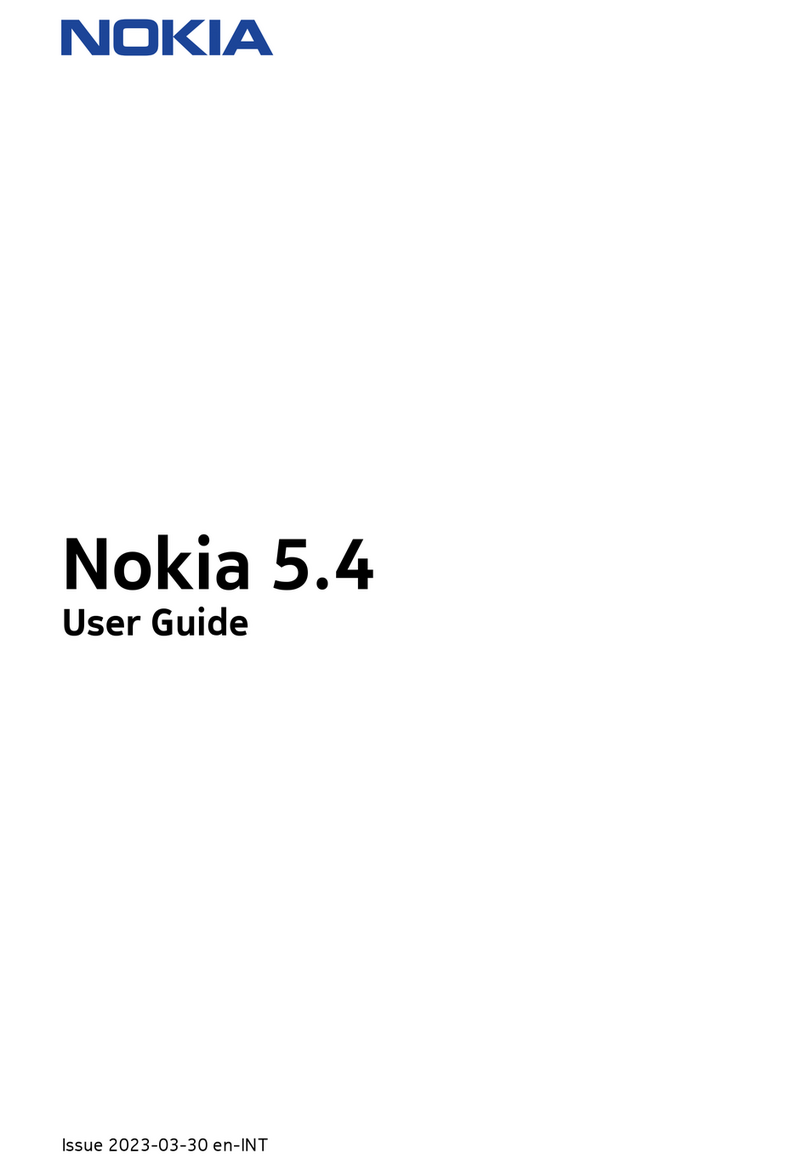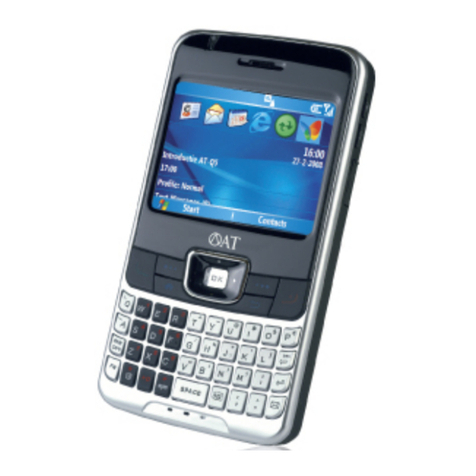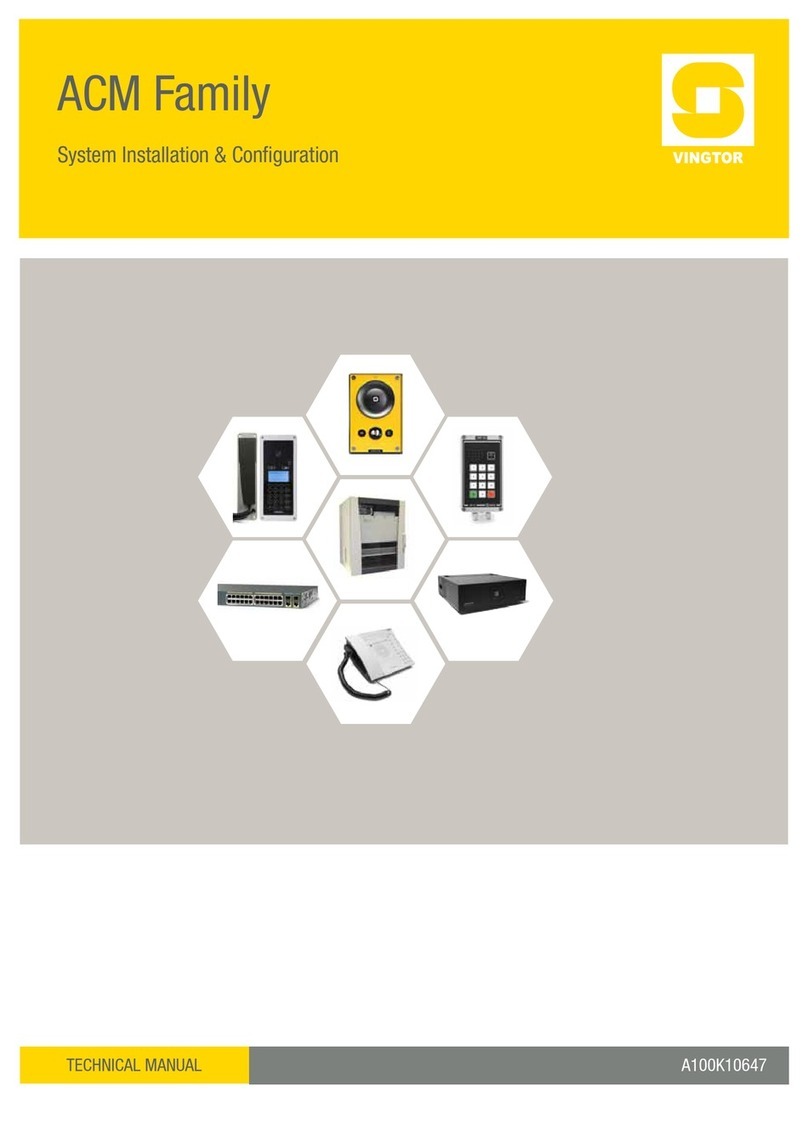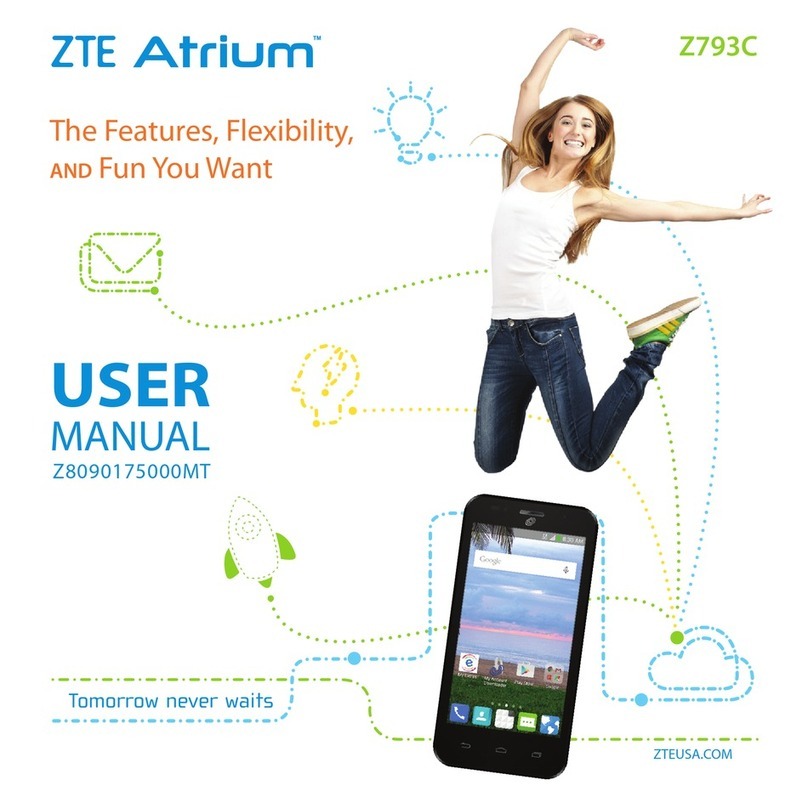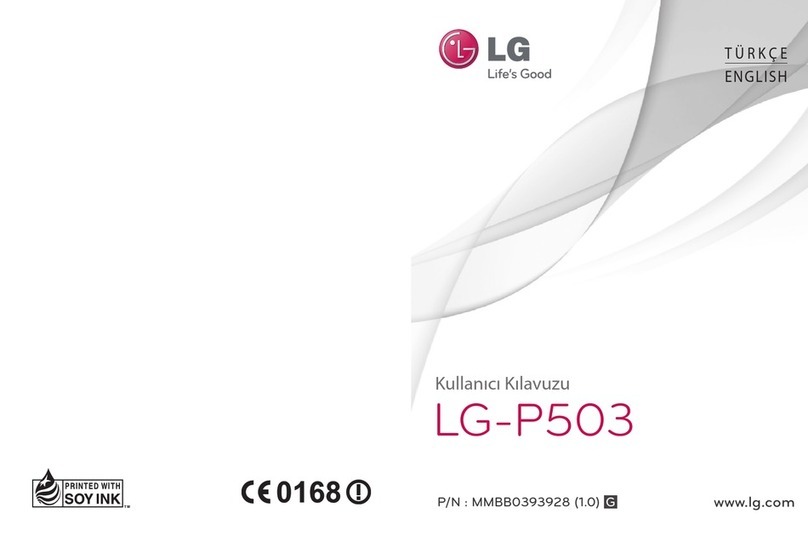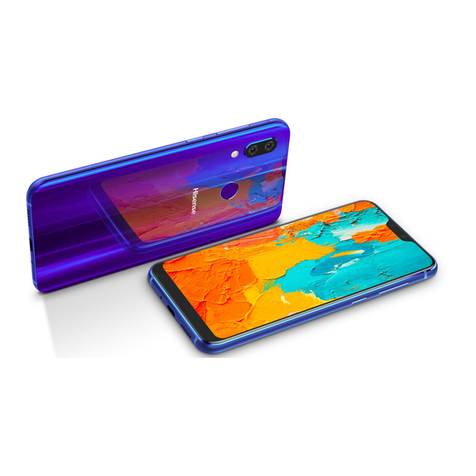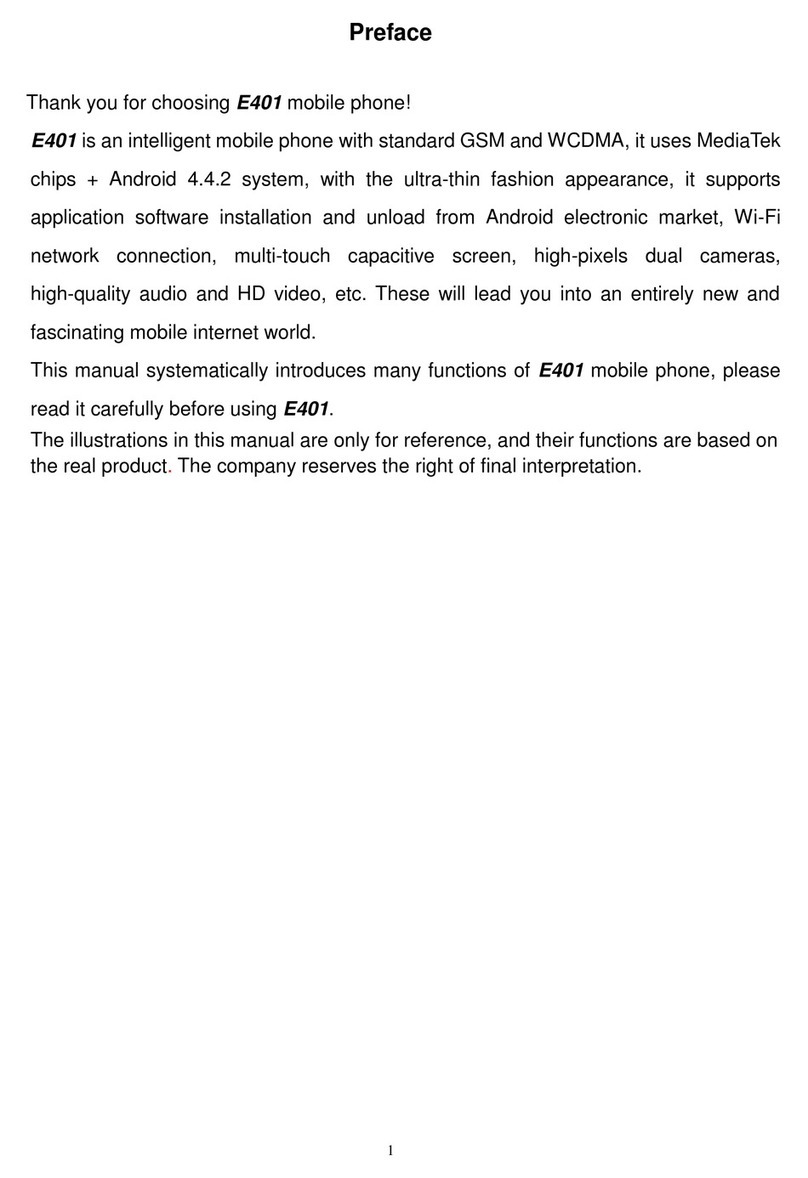5 (10)
Nokia 9290 Communicator
Nokia Mobile Phones
Setting Up E-mail Service
Copyright Nokia Corporation 2001-2002. All rights reserved.
Portable Network Graphics PNG "image/png"
"image/x-png"
Rich Text Format RTF "application/rtf"
"text/rtf"
Ringing Tones (*) MG "application/vnd.nokia.ringing-tone"
Tagged Image File Format (TIFF, JPEG (*)) TIF, JPG, JIF "image/tiff"
"image/jpeg"
Text (*) TXT "text/plain"
UNIX Compress, Tar TAR, TAZ "application/x-tar"
UNIX Gzip TGZ "application/x-gzip"
"application/gzip"
Visio VSD "application/vnd.visio"
Windows Bitmap BMP, RLE, ICO, CUR "image/x-win-bitmap"
"image/x-MS-bmp"
"image/bmp"
"image/x-bmp"
Windows Metafile WMF, EMF "image/x-win-metafile"
"image/x-wmf"
WordPerfect
4/5/6/7/8 WPD "application/wordperfect5"
"application/wordperfect5.1"
"application/x-wordperfect6"
Table 1. Initially supported attachment types
Multiple remote mailboxes can be defined in the communicator's messaging system. Each remote mailbox is displayed
as a separate folder in the messaging centre application. When replying to a message received by a particular e-mail
account, the communicator makes sure that replies will be sent using the same e-mail account by default. This
ensures that potentially confidential business e-mail is sent only via the same e-mail account that is located in the
company's intranet, even if there may be other insecure Internet e-mail accounts defined in the device at the same
time.
It is also possible to organise the remote mailbox by moving and copying messages between remote folders when the
IMAP4 protocol is used. New remote folders can be created and remote messages can be moved or copied between
remote folders stored on the e-mail server. Note that the IMAP4 APPEND command is not supported. This means that
it is not possible to upload local messages into the e-mail server. However, it is possible to define that a copy of each
outgoing e-mail message is automatically sent to the user's own e-mail address as well. When this option is used, all
sent messages will also appear in the remote Inbox, and they can be moved to other remote folders if necessary.
Offline operations (move, copy, or delete messages) are supported. These operations occur when the e-mail client
connects to the remote mail server the next time. The IMAP4 protocol supports copy, move, and delete operations
when offline, and the POP3 protocol allows the deletion of e-mail messages while offline.
The APOP command can be used with the POP3 protocol to protect the password when connecting to a POP3 mail
server.
A memory card can be used to increase the message storage capacity. The communicator messaging system uses
either internal memory or the memory card to store e-mail messages. The message store can be moved from the
internal memory to the memory card to obtain more storage capacity for e-mail.
In order to reduce disk space used for downloaded e-mail, the e-mail client can optionally also clear messages older
than a pre-defined time (one day, one week, two weeks, or one month). Clearing mail messages means that
downloaded message texts and attachments are removed from the device, but that the original messages are still
